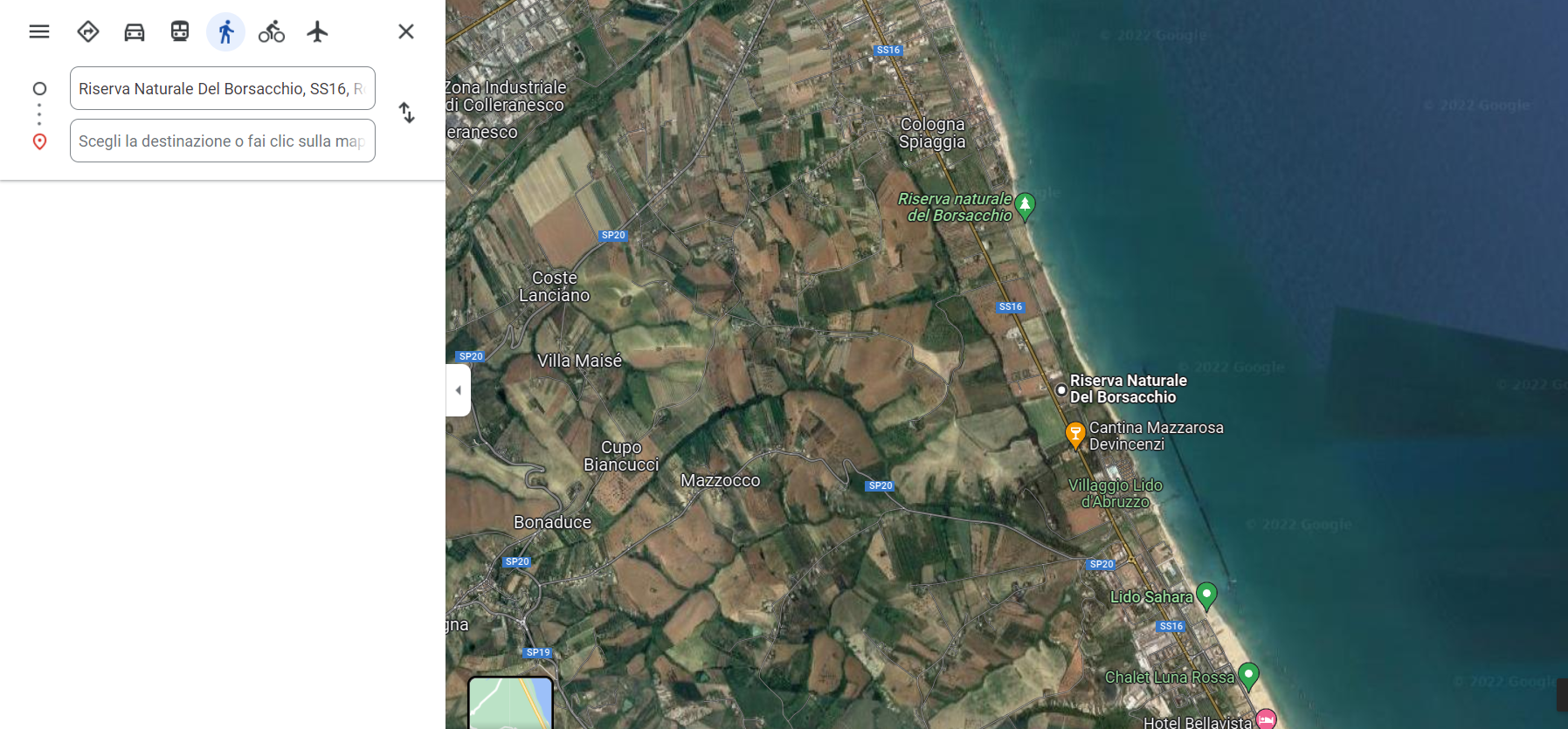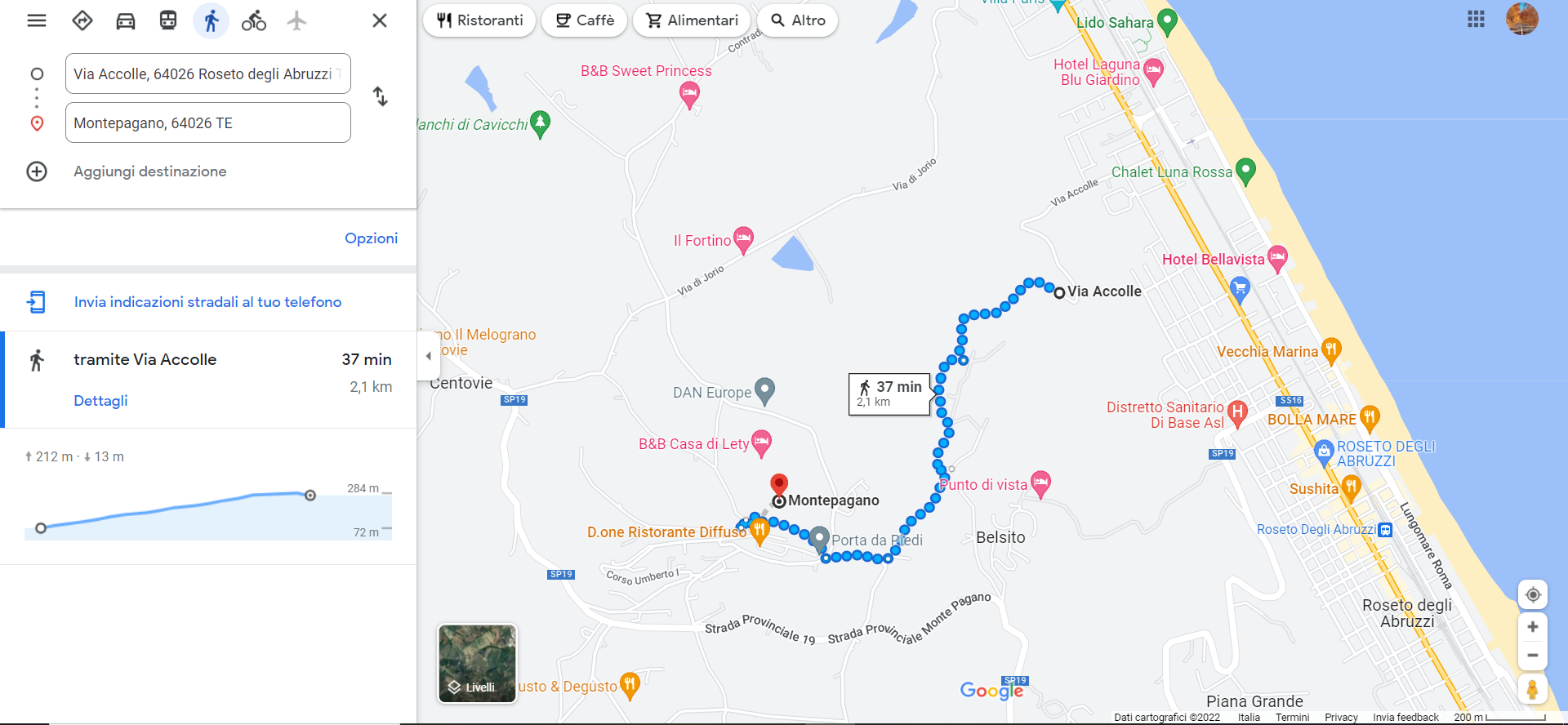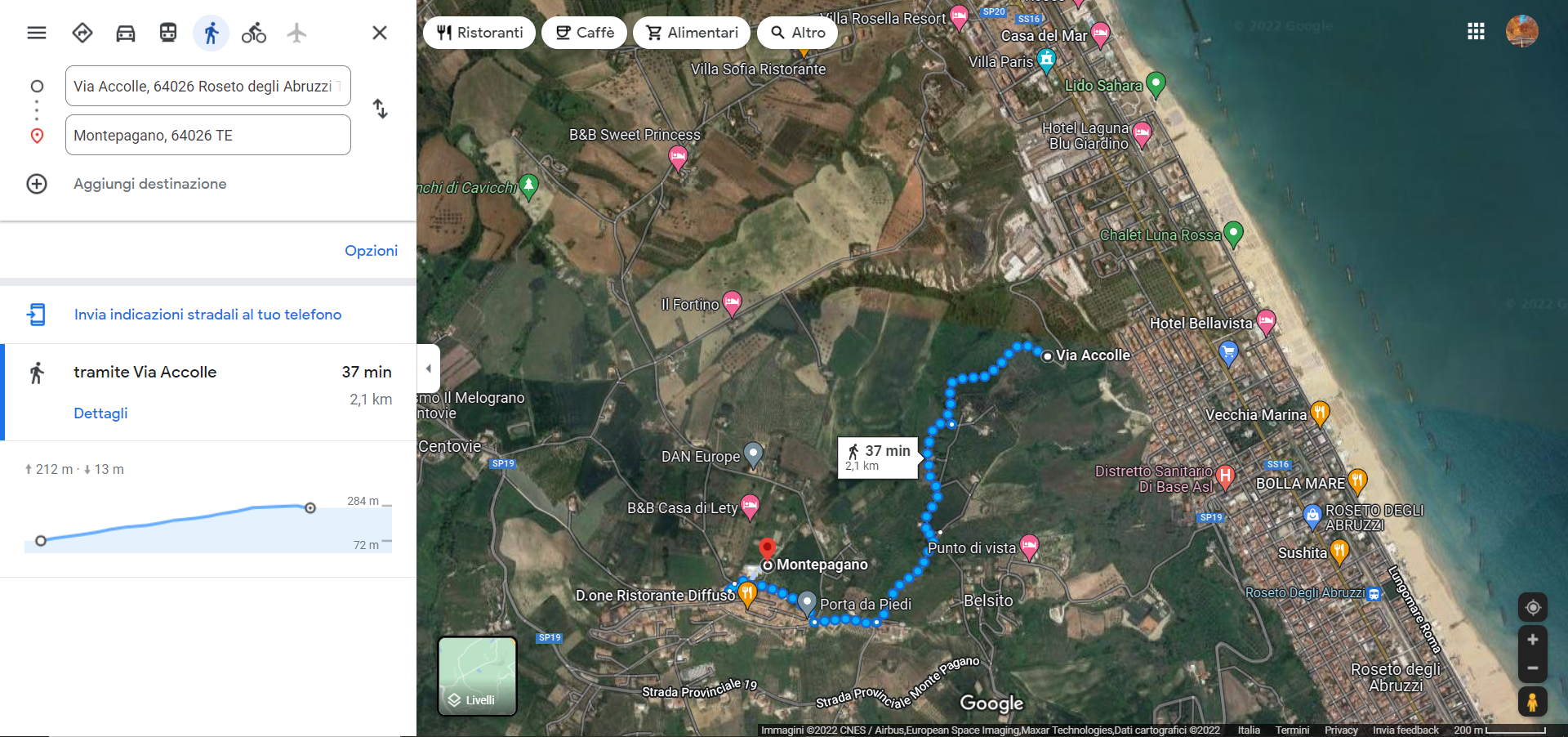Photo: Stefano Capuani
The Borsacchio Nature Reserve, established in 2005, is located in the territory between Roseto degli Abruzzi (TE) and its hamlet of Cologna Spiaggia, between the Adriatic Sea and the hills of Cologna Paese and Montepagano. The area of the Reserve is characterized by its environmental and landscape integrity, not yet affected by the settlement development that has affected most of the territories of the Adriatic coast. The presence of embryonic dunes and stretches of Mediterranean scrub are the natural habitat of reproduction of rare species of birds, including the fratino, whose presence is the sign of a clean beach rich in spontaneous vegetation.

The identification of the current area on which the Reserve extends dates back to 1939, when the beach of Roseto degli Abruzzi was recognized of considerable public interest, as it consists of groves of poplars, pines and other spontaneously growing trees a few meters from the shore. In 1969 a decree extended the landscape constraint to the hill behind, thus contributing to the preservation of the existing habitat. Subsequently, the Ministry of Education and the Ministry of Tourism decreed the definitive extension of the Borsacchio constraint. In addition to the environmental characteristics, historical elements contributed in paying attention to the area. Near the Borsacchio was found a helmet belonging to an ancient civilization, attributable to the passage of the Goths in Abruzzo. In 1800 the Tordino area and the Borsacchio stream were under the administration of the University of Giulianova, while the Vomano area was governed by Montepagano. A few years later, the King of Naples assigned Montepagano the entire control of Borsacchio. Flora In the Regional Nature Reserve of Borsacchio we can find the sea lily , a rare flower, which, in addition to being beautiful, is also poisonous, and thesulla, a spontaneous herbaceous plant also widely used in natural medicine. Fauna In the Borsacchio Reserve it is possible to spot thered squirrel in its raids among the branches of the trees, while in the water you can find the cagnetta , a fish that lives practically attached to the bed of rivers and streams, which it feels with its fins, preferring gravel and gravel bottoms with clean and running waters. It feeds on worms and larvae, insects and small fish that it finds on the seabed. It has omnivorous characteristics and looks for food especially at dusk or at night. Source: https://www.visitroseto.it/Vedere/Riserva-del-Borsacchio/6-72-1.html https://www.youtube.com/watch?v=DdykbEZTtDs&feature=emb_logo https://www.wwf.it/pandanews/ambiente/la-riserva-del-borsacchio-come-non-lavete-mai-vista/ https://www.youtube.com/watch?v=YElG9qpw9qA
From the Borsacchio Reserve to the ancient village of Montepagano
After visiting the Borsacchio Nature Reserve, take the Strada Statale 16 of Roseto degli Abruzzi and turn into Via Accolle. Park as soon as you see the Calanchi di Diodoro and continue on foot for 2 kilometers along this road in a pleasant walk that will lead you to the ancient village of Montepagano, today a hamlet of Roseto degli Abruzzi, formerly the place where the history and urbanization of the current municipality developed. The center was inhabited since the Middle Ages (XI century d.C.). As for all the ancient villages that we find along the Abruzzo coast, its position is due to defensive purposes from attacks from the sea. The name, of Latin origin, comes from the fusion of the words "mons-montis" and "pagus" and means "village on the mountain". After falling under Norman hands, from the thirteenth century it passed to the Papal States. It remained a faithful fief to the Church of Rome until it was invaded by the French in 1798. In 1857 the clergy of the Church Ricettizia, foreseeing the development of the coast below, rented to 12 settlers 12 plots of land (shares). This area corresponds to the current central area of Roseto that goes from the Villa Comunale in the south to the junction for Montepagano in the north, and is precisely called by the locals "Le quote". In the sacristy of the church of SS Annunziata di Montepagano there is an epigraph that recalls this act of rent. This village was the seat of the Municipality from the Unification of Italy until 1927, the year in which Benito Mussolini with a royal decree signed by King Vittorio Emanuele III moved the Municipality from Montepagano to Rosburgo, renaming it Roseto degli Abruzzi.

